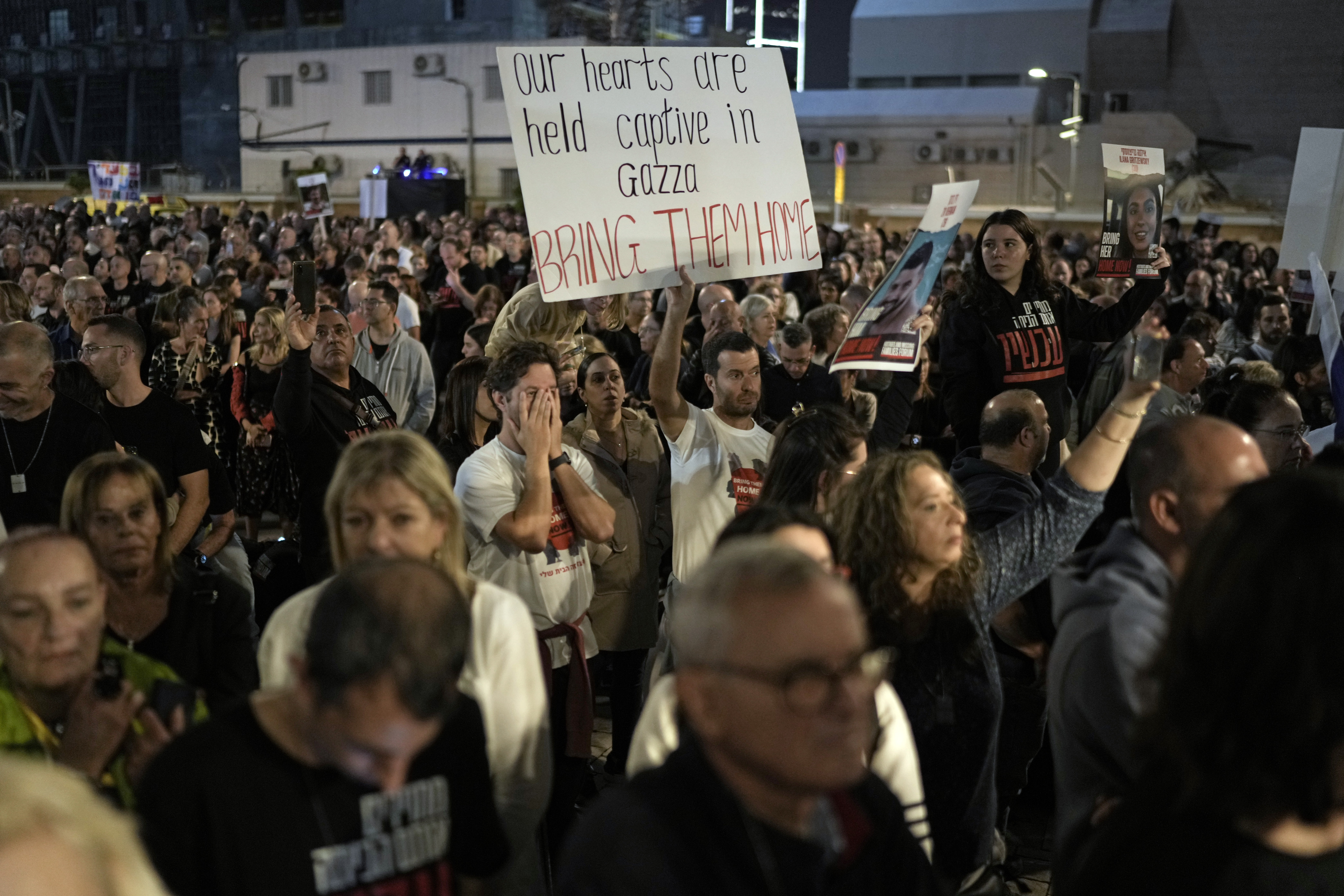This website uses cookies so that we can provide you with the best user experience possible. Cookie information is stored in your browser and performs functions such as recognising you when you return to our website and helping our team to understand which sections of the website you find most interesting and useful.

“13 Israelis and 4 foreigners were received by ICRC and on their way to Rafah,” Al Ansari wrote in a message posted to X, formerly known as Twitter.
Al Ansari had posted earlier in the day that a dispute causing a delay in the hostage transfer had been resolved by Qatari-Egyptian mediators.
“After a delay, obstacles to release of prisoners were overcome through Qatari-Egyptian contacts with both sides,” Al Ansari wrote on Saturday afternoon.
According to Al Ansari, the prisoners set to be released by Israel in the second phase of the transfer would “include 33 children and 6 women, while those released from Gaza will include 8 children and 5 women, in addition to 7 foreigners.” Al Ansari later updated to say only 4 foreigners would be released.
The delay, first reported by Reuters, came as Hamas’ armed wing said it would not release the second round of hostages until Israel held up its side of the truce deal: allowing aid trucks to enter the besieged northern Gaza region.
Israel maintained that it had not violated the agreement. Thousands of protesters gathered in Tel Aviv to demand the release of the second group of hostages following the news of the delay.
President Joe Biden, walking around downtown Nantucket, did not answer shouted questions from reporters on if any American hostages would be released Saturday.
Asked later in more general terms about the hostage release, Biden replied: “hopefully we’ll see something soon,” according to pool reports.
The White House later released a readout of Biden’s call with Qatar’s Amir Sheikh Tamim Bin Hamad Al-Thani and Prime Minister Sheikh Mohammed bin Abdulrahman al Thani, where the leaders discussed “hurdles to implementation of the deal and mechanisms for resolving those hurdles as soon as possible.”
Israeli Prime Minister Benjamin Netanyahu “held an assessment of the situation” Saturday evening “to verify that the second phase is proceeding as planned,” according to a message on his X feed.
Defense Sec. Lloyd Austin spoke with his Israeli counterpart, Yoav Gallant. In the call, Austin shared his view that “humanitarian aid must increase, and that civilians must have safe areas to receive aid across Gaza,” according to a readout.
The hostage transfer is part of a broader four-day truce agreement brokered by Qatar, Egypt and the U.S. that started Friday, when Hamas released 24 of the about 240 hostages it had taken on Oct. 7, and Israel freed 39 Palestinians.
The Israeli hostages, including nine women and four children, were captured by Hamas during its initial cross-border assault. The Palestinian prisoners, who were detained in the occupied West Bank and east Jerusalem, included several women convicted of attempted stabbings of Israeli officers and teenagers arrested for minor offenses.
Hamas is still holding over 200 hostages while Israel has upward of 8,000 Palestinians detained in prisons across the state — about 5,000 of whom were arrested before the Oct. 7 attack.
Over the course of the four-day truce, Hamas is set to release at least 50 Israeli hostages and Israel 150 Palestinians.
The cease-fire brought a brief respite in the fighting that has ravaged the region since Oct. 7. Hamas rockets that had been continuously launched into Israel went quiet and the relentless Israeli bombardment of Gaza broke, allowing much-needed aid to enter northern Gaza for the first time in over a month and giving Palestinians a chance to search for survivors in the rubble of razed buildings.
Israeli attacks have leveled entire neighborhoods in Gaza, killing over 13,300 Palestinians and displacing over 1.7 million others — 80 percent of Gaza’s population. Hamas killed some 1,200 people on Oct. 7.



 Africana55 Radio
Africana55 Radio 
